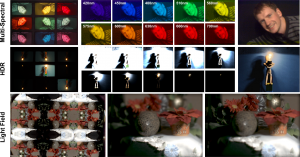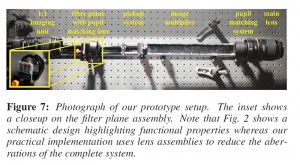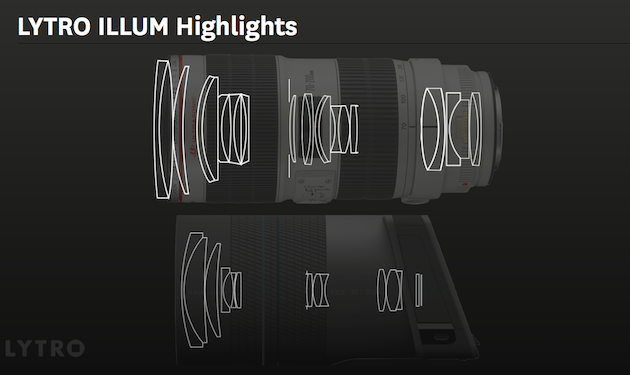KaleidoCamera: Addon brings Light Field-, HDR-, and other Features to ordinary DSLRs
 Light field photography is very exciting, but so far, the options for consumers are very limited. You can either get an affordable dedicated light field camera (coming with its own set of drawbacks), or go for a custom DSLR modification that is pointed at the professional and industrial market and basically out of reach for typical enthusiasts.
Light field photography is very exciting, but so far, the options for consumers are very limited. You can either get an affordable dedicated light field camera (coming with its own set of drawbacks), or go for a custom DSLR modification that is pointed at the professional and industrial market and basically out of reach for typical enthusiasts.
Recent news of a new Olympus patent for a Micro Four-Thirds plenoptic adapter have already shown that it might not be so long until we can upgrade interchangeable-lens cameras on a flexible basis. At this year’s SIGGRAPH conference, set to take place next week in Anaheim, California, Researchers Alkhazur Manakov and colleagues from Saarland University (Germany) will be presenting a new, addon for ordinary DSLR cameras, that will achieve even more than “just” light field capabilities.
The adapter, called KaleidoCamera, is mounted between a standard DSLR body and standard lens. It splits up the incoming light into a number of beams, each depending on the angle of entry into the system. These beams of light can then be used (read: filtered) individually before reaching the sensor in a composite grid of several sub-images. After the picture is taken, software algorithms can be used to merge the data into a single, rich image.
Depending on the configuration of the setup (i.e. what filters and glass are used inside), KaleidoCamera will enable light field photography (including software refocus, parallax/perspective, and changeable field of view), single-shot HDR, post-exposure variable polarization, and even multispectral photography (obliterating the need for white balancing).
Publication Abstract
We propose a non-permanent add-on that enables plenoptic imaging with standard cameras which we refer to as KaleidoCamera. Our design is based on a physical copying mechanism that multiplies a sensor image into a number of identical copies that still carry the plenoptic information of interest. Via different optical filters, we can then recover the desired information. A minor modification of the design also allows for aperture subsampling and, hence, light-field imaging.
As the filters in our design are exchangeable, a reconfiguration for different imaging purposes is possible. We show in a prototype setup that high dynamic range, multispectral, polarization, and light-field imaging can be achieved with our design.
More information: Manakov A, Restrepo J, Klehm O, Hegedus R, Eisemann E, Seidel HP, Ihrke I (2013): A Reconfigurable Add-on for Multi-Spectral, High-Speed, Polarization and Light-Field Imaging. ACM Trans. Graph. 32, 4 (Proc. SIGGRAPH).


![Lytro Illum Starts Shipping [In-Depth Reviews, Pictures]](http://lightfield-forum.com/wordpress/wp-content/themes/hueman/assets/front/img/thumb-medium-empty.png)
![Displays: Fundamentals and Applications [Free Ebook]](http://lightfield-forum.com/wordpress/wp-content/uploads/2015/08/cover-displays-fundamentals-and-applications-hainich-bimber.jpg)





4 Responses